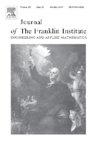A dual-mode framework for lifting-based self-triggered model predictive control of linear systems with a guarantee of minimum triggering in steady state
IF 4.2
3区 计算机科学
Q2 AUTOMATION & CONTROL SYSTEMS
Journal of The Franklin Institute-engineering and Applied Mathematics
Pub Date : 2025-06-25
DOI:10.1016/j.jfranklin.2025.107805
引用次数: 0
Abstract
In this paper, we propose a new self-triggered model predictive control (ST-MPC) that stabilizes a class of linear time-invariant systems, under limited communication resource between plant and controller. A remarkable feature of the ST-MPC presented this work is to trigger as little as possible in steady state, by adopting the lifting method in order to realize the dual-mode paradigm in the ST-MPC formulation. In the lifting-based dual-mode framework, the steady-state requirement on minimum triggering can be achieved by driving the system state into a (maximal) positively invariant set constructed based on a large-sized lifted model, for which a new self-triggering mechanism is also proposed to plan a sequence of moments of triggering in transient (that takes place more frequently than in steady state if needed). The solution of a lifting-based discrete-time algebraic Riccati equation (DARE) plays an essential role in the ST-MPC design, whose existence condition and structural properties are thus intensively studied. The recursive feasibility and closed-loop stability are mathematically analyzed, while the validity of the proposed ST-MPC is verified via computer-aided simulation.
一种保证稳态最小触发的基于提升的线性系统自触发模型预测控制双模框架
本文提出了一种新的自触发模型预测控制(ST-MPC),在被控对象和控制器之间的通信资源有限的情况下,稳定一类线性时不变系统。本文提出的ST-MPC的一个显著特点是在稳态下尽可能少地触发,采用提升方法,以实现ST-MPC公式中的双模范式。在基于提升的双模框架中,通过将系统状态驱动为基于大型提升模型构建的(极大)正不变集来满足最小触发的稳态要求,并为此提出了一种新的自触发机制,用于规划瞬态触发时刻序列(如果需要,可以比稳态更频繁地触发)。基于升力的离散时间代数Riccati方程(DARE)的求解在ST-MPC的设计中起着至关重要的作用,因此对ST-MPC的存在条件和结构特性进行了深入的研究。数学分析了该算法的递归可行性和闭环稳定性,并通过计算机辅助仿真验证了该算法的有效性。
本文章由计算机程序翻译,如有差异,请以英文原文为准。
求助全文
约1分钟内获得全文
求助全文
来源期刊
CiteScore
7.30
自引率
14.60%
发文量
586
审稿时长
6.9 months
期刊介绍:
The Journal of The Franklin Institute has an established reputation for publishing high-quality papers in the field of engineering and applied mathematics. Its current focus is on control systems, complex networks and dynamic systems, signal processing and communications and their applications. All submitted papers are peer-reviewed. The Journal will publish original research papers and research review papers of substance. Papers and special focus issues are judged upon possible lasting value, which has been and continues to be the strength of the Journal of The Franklin Institute.

 求助内容:
求助内容: 应助结果提醒方式:
应助结果提醒方式:


